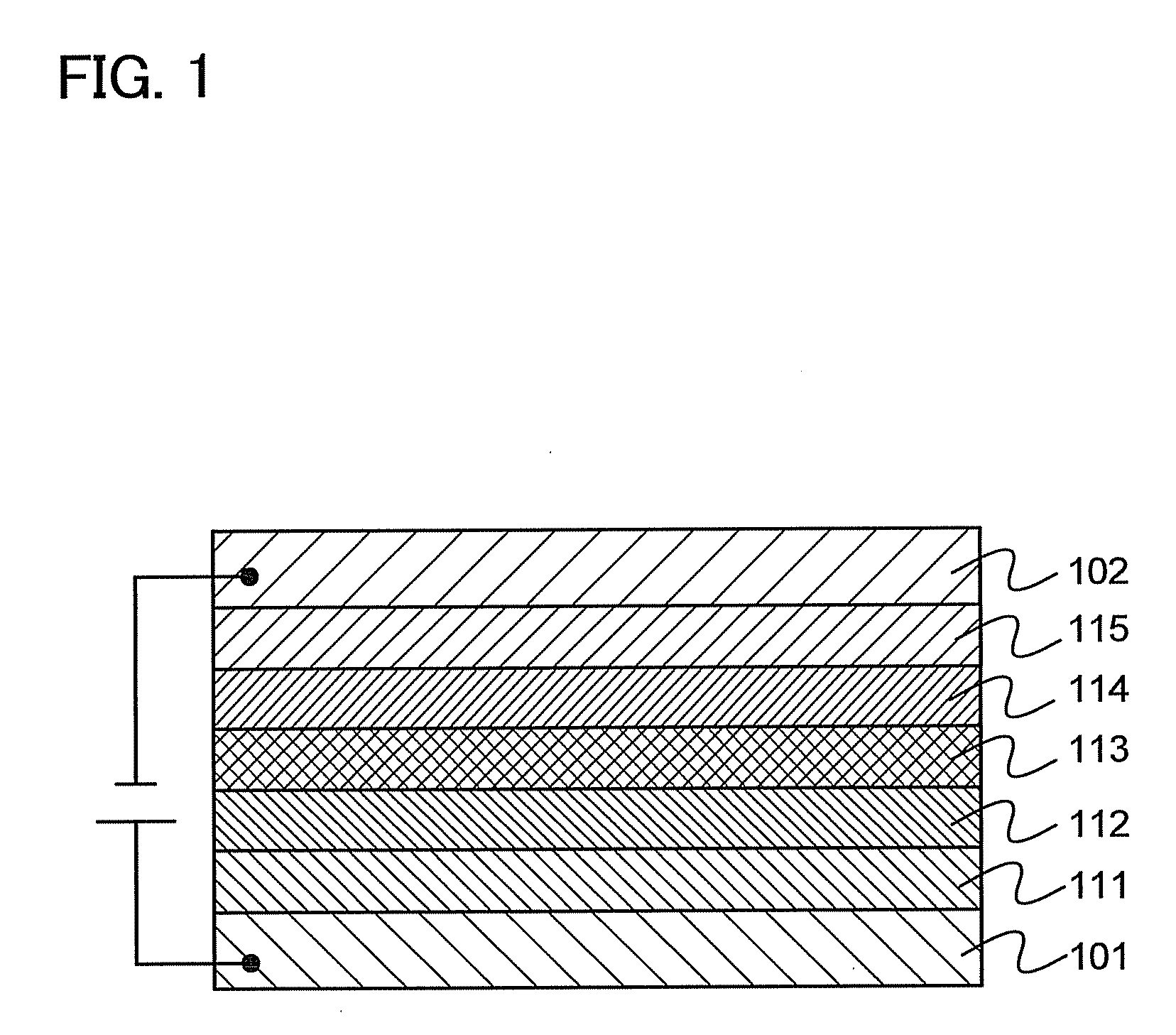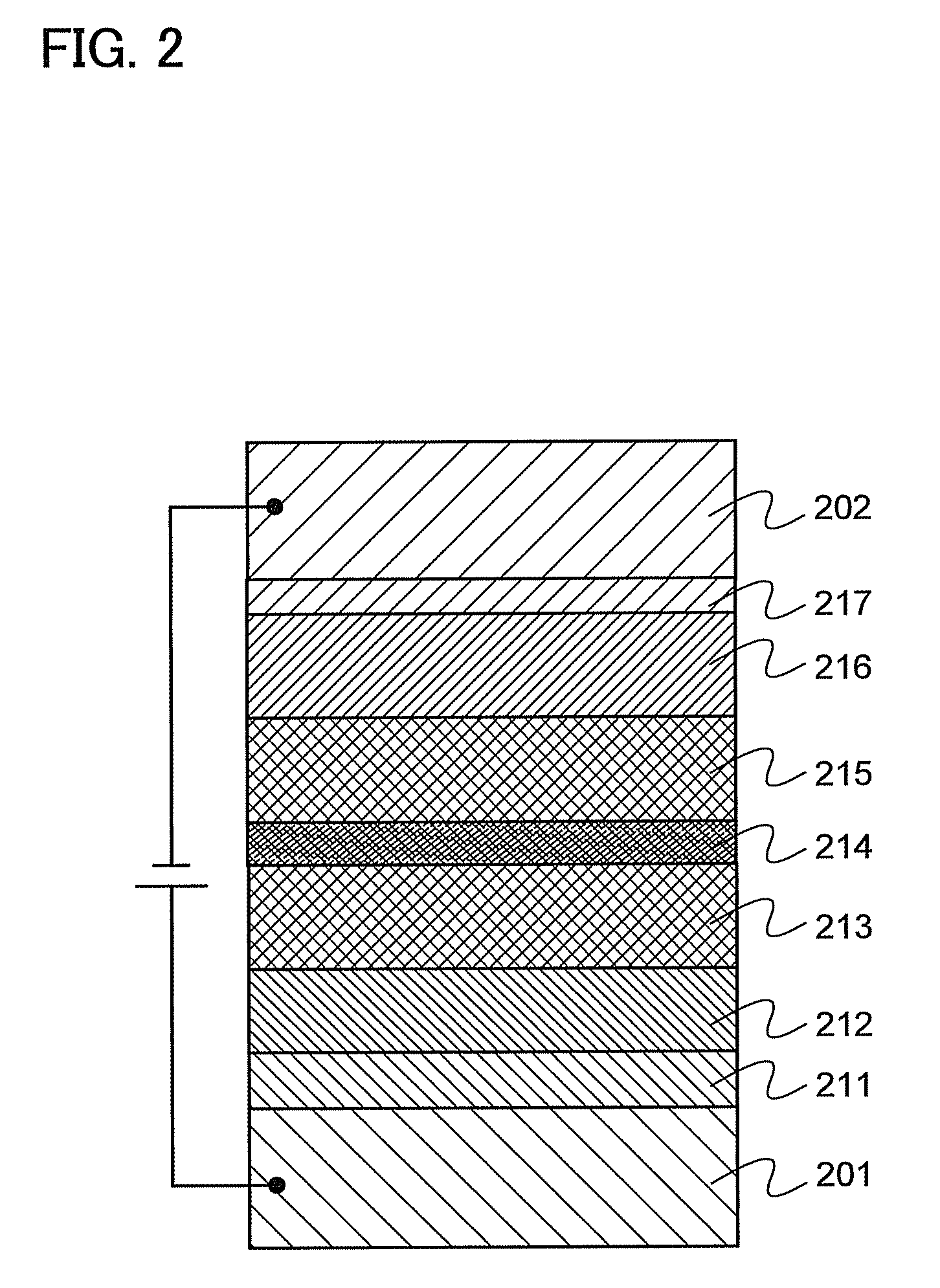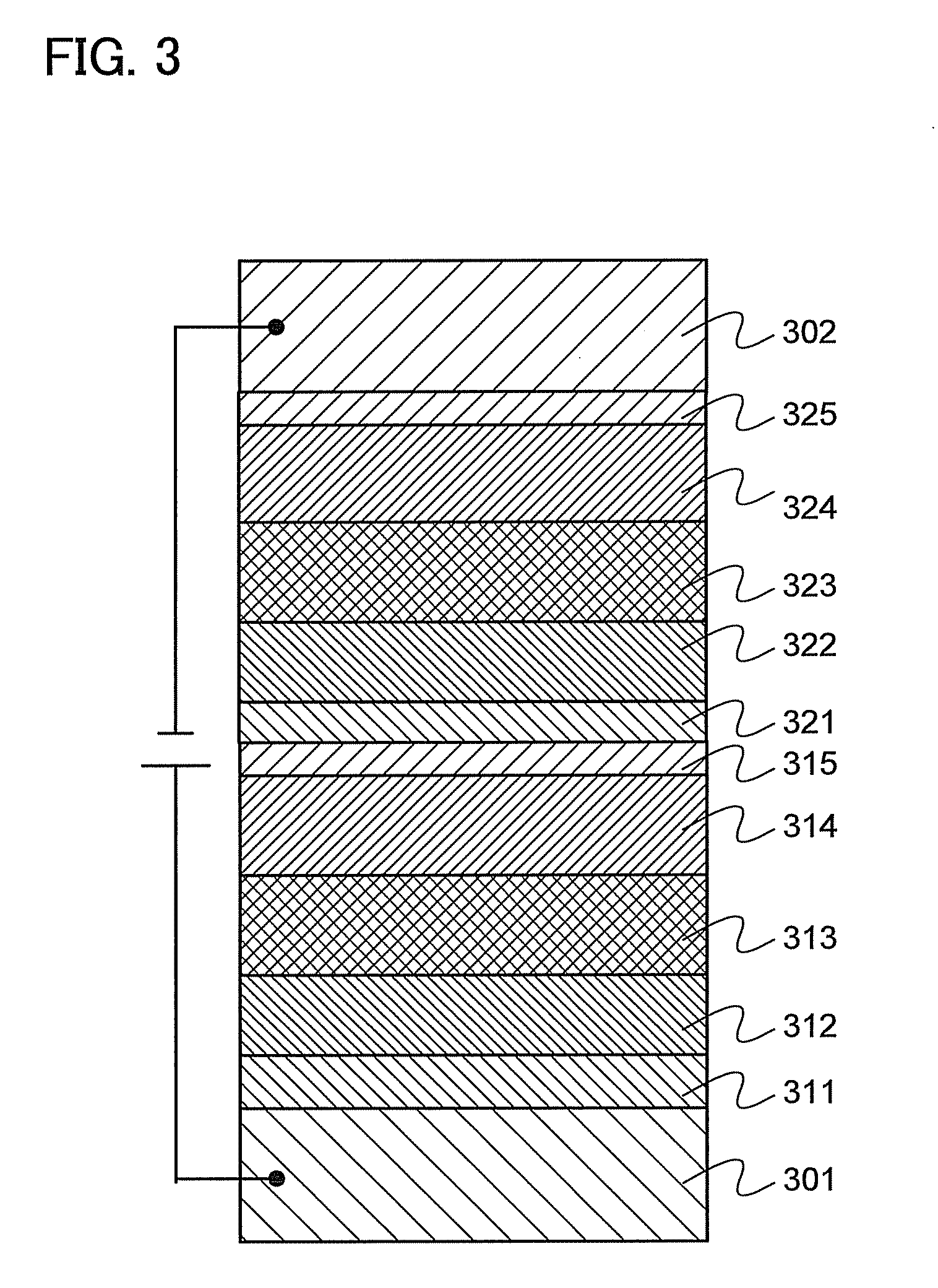Organometallic Complex, and Light-Emitting Element, Light-Emitting Device, and Electronic Device Including the Organometallic Complex
- Summary
- Abstract
- Description
- Claims
- Application Information
AI Technical Summary
Benefits of technology
Problems solved by technology
Method used
Image
Examples
embodiment 1
[0055]An organometallic complex according to one embodiment of the present invention will be described in Embodiment 1.
[0056]An organometallic complex of one embodiment of the present invention is formed by ortho metalation of a pyrazine derivative represented by the following general formula (G0) with a metal ion belonging to Group 9 or Group 10.
[0057]In the formula, R1 to R5 each represent hydrogen or a cyano group, and at least one of R1 to R5 is a cyano group.
[0058]The pyrazine derivative represented by the general formula (G0) can be synthesized by the following simple and easy synthesis scheme. For example, as shown in the following synthesis scheme (a), the pyrazine derivative can be obtained by reacting a halogen compound of a pyrazine derivative (A1) with an arylboronic acid compound (A2). Note that in the synthesis scheme (a), X represents a halogen element. Further, R1 to R5 each represent hydrogen or a cyano group, and at least one of R1 to R5 is a cyano group.
[0059]Alte...
embodiment 2
[0073]Embodiment 2 will describe an embodiment of a light-emitting element which includes any of the organometallic complexes described in Embodiment 1 as a light-emitting substance with reference to FIG. 1.
[0074]FIG. 1 illustrates a light-emitting element including a light-emitting layer 113 between a first electrode 101 and a second electrode 102. The light-emitting layer 113 includes any of the organometallic complexes of the present invention as described above in Embodiment 1.
[0075]By applying voltage to such a light-emitting element, holes injected from the first electrode 101 and electrons injected from the second electrode 102 are recombined with each other in the light-emitting layer 113 to bring any of the organometallic complexes described in Embodiment 1 to an excited state. Light is emitted when the organometallic complex in the excited state returns to the ground state. Any of the organometallic complexes described in Embodiment 1 thus functions as a light-emitting sub...
embodiment 3
[0097]In Embodiment 3, an embodiment of a light-emitting element different from that in Embodiment 2 will be described with reference to FIG. 2. The embodiment of a light-emitting element using any of the organometallic complexes described in Embodiment 1 may have a plurality of light-emitting layers. The plurality of light-emitting layers is provided and then each of them emits light. Accordingly, light that is a combination of light emitted from the plurality of light-emitting layers can be obtained; for example, white-color light can be obtained. In Embodiment 3, an embodiment of a light-emitting element including a plurality of light-emitting layers will be described with reference to FIG. 2.
[0098]In FIG. 2, a first light-emitting layer 213 and a second light-emitting layer 215 are provided between a first electrode 201 and a second electrode 202. Light that is a combination of light emitted from the first light-emitting layer 213 and light emitted from the second light-emitting...
PUM
| Property | Measurement | Unit |
|---|---|---|
| Wavelength | aaaaa | aaaaa |
| Light | aaaaa | aaaaa |
| Luminous efficiency | aaaaa | aaaaa |
Abstract
Description
Claims
Application Information
 Login to View More
Login to View More - R&D
- Intellectual Property
- Life Sciences
- Materials
- Tech Scout
- Unparalleled Data Quality
- Higher Quality Content
- 60% Fewer Hallucinations
Browse by: Latest US Patents, China's latest patents, Technical Efficacy Thesaurus, Application Domain, Technology Topic, Popular Technical Reports.
© 2025 PatSnap. All rights reserved.Legal|Privacy policy|Modern Slavery Act Transparency Statement|Sitemap|About US| Contact US: help@patsnap.com



